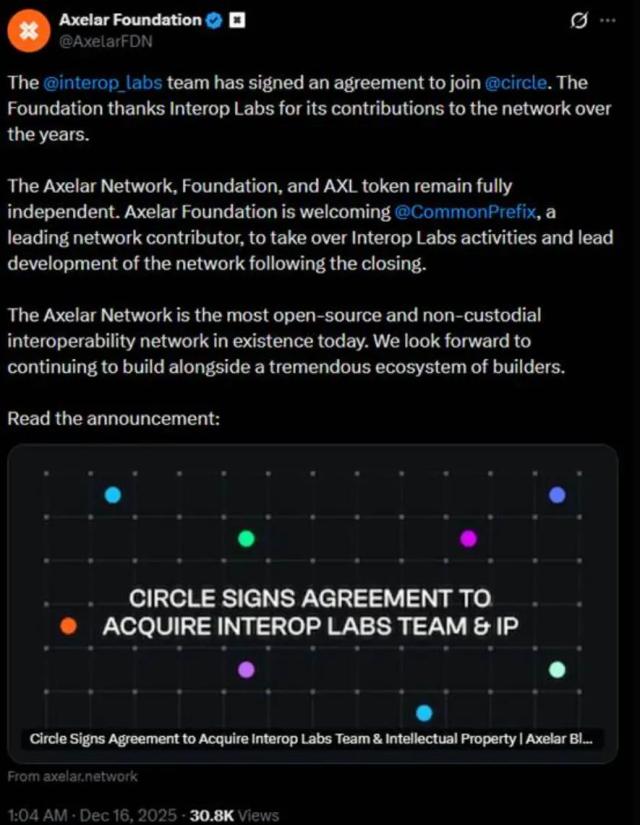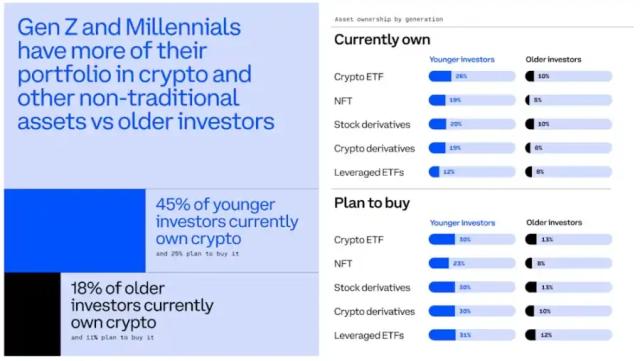Frax Finance founder Sam Kazemian recently questioned Ethereum's leading position in stablecoin and real-world asset (RWA) issuance. He pointed out that Ethereum's "settlement guarantee" will lose meaning when assets are natively issued across chains, and called on the community to address challenges in institutional adoption and real-world aspects.
Table of Contents
ToggleStablecoin and RWA Leadership Loss: Is Ethereum's Settlement Guarantee Necessary?
Kazemian stated that with the rapid rise of RWAs and regulated stablecoins, the importance of issuing or settling assets on the Ethereum mainnet (ETH L1) is diminishing.
He cited the example of BlackRock and Securitize's US Treasury tokenized fund BUIDL, which has been issued simultaneously on Ethereum, Arbitrum, and Solana, showing that RWA multi-chain deployment has become the new norm:
While this is good for BlackRock, it may be a zero-sum game for the "vision of Ethereum as the 'institutional issuance mainchain'."
He further pointed out that for assets without an issuer (like BTC), Ethereum's settlement guarantee still holds value. However, for RWAs with a responsible entity, the key to fulfilling obligations lies with the issuer, not the blockchain's verification mechanism. The necessity of choosing Ethereum varies accordingly.
Is Institutional Trust in Ethereum Just a Myth? Kazemian Directly Points Out Systemic Vulnerabilities
Kazemian noted that if tokenized asset liabilities are natively issued on L2 rather than extended from the Ethereum mainnet, these assets will lose Ethereum's security and trust endorsement, and the network's necessity becomes less important.
He used Frax's institutional stablecoin $frxUSD as an example, which exists natively on chains like Fraxtal and Solana, without relying on Ethereum mainnet protection.
He also criticized the community's overly scattered attitude towards trusting Ethereum:
Ethereum supporters should have a strong "territorial consciousness" about RWA issuance, similar to Bitcoin maximalists' attitude towards BTC. Otherwise, ETH's "settlement guarantee" characteristic will become meaningless in the RWA domain. If RWAs are natively issued on multiple chains, settlement location becomes irrelevant.
Possible Solution? Asset Priority Uniqueness Attempts to Rebuild Mainnet Value
Regarding a solution, Kazemian proposed the concept of "issuance alignment". He suggested establishing "senior class liabilities" with legal priority on the Ethereum mainnet, allowing only mainnet issuance and priority redemption, while keeping daily transaction assets cross-chain flexible, hoping to revive Ethereum's leadership in legal and trust levels:
If we want to strengthen Ethereum's position in institutional asset issuance, we should ensure that the most important, legally priority-payable assets can only be issued on the Ethereum mainnet.
(Declining Fee Income Signaling Decline? Ignas: Ethereum's Value Essence Has Long Been Reshaped)
Can Ethereum Remain the Institutional Mainchain? Requires Community Consensus and Technological Innovation
Sam Kazemian's questioning reveals potential structural risks for Ethereum in the new financial era. When issuers become the cross-chain asset performance entities, Ethereum may lose its long-term competitive advantage if it does not clearly define its role.
Now, "senior liability assets" may be the starting point for rebuilding its uniqueness, but balancing multi-chain flexibility and mainnet orthodoxy still requires collective effort and experimentation from the entire community.
Risk Warning
Cryptocurrency investment carries high risks, and its price may fluctuate dramatically. You may lose all of your principal. Please carefully assess the risks.
Recently on Twitter (X), a video of Ethereum co-founder Vitalik talking to a "meowing" robot went viral. This short video has left many crypto enthusiasts with mixed feelings, as many people's fortunes are essentially tied to this genius who is "meowing" at a robot.
Table of Contents
ToggleVitalik's Meow Sensation, Crypto Community Amused and Frustrated
In the video, Vitalik kneels on the ground, gesturing and making "meow" sounds to a robot, even patting its head. After the video went viral, it immediately sparked various responses from crypto enthusiasts:
Crypto YouTuber Wendy O: "The future of Ethereum is in this man's hands... meow."
Cork Protocol founder Phil Fogel self-deprecatingly said: "My career and assets are all in his hands, but I'm still bullish."
Influencer Scott Crypto Warrior joked: "Please pray for my ETH position."
As of now, Vitalik himself has not responded to this video.

ETH Performance Poor, Weakest Against BTC in Nearly Five Years
Although the video has attracted many netizens' mockery, the crypto atmosphere is actually quite tense. According to CoinMarketCap data:
Current ETH price is $1,810
Dropped over 13% in the past month
Showing the weakest performance against BTC in nearly five years
Some netizens complained: "ETH dropped 5% in a minute, while Vitalik is meowing at a robot." Others said: "It's his freedom to do what he wants, but knowing most of my assets are tied to him, I'm really anxious."

Risk Warning
Cryptocurrency investment carries high risks, and its price may fluctuate dramatically. You may lose all of your principal. Please carefully assess the risks.








